
Glitch art is a type of art that is created by deliberately introducing errors or “glitches” into digital images or videos. Glitch art can be made with software, hardware, or simply by manipulating digital data. Glitch art often explores the relationship between technology and society. It can comment on mass surveillance, corporate power, and the commodification of culture.
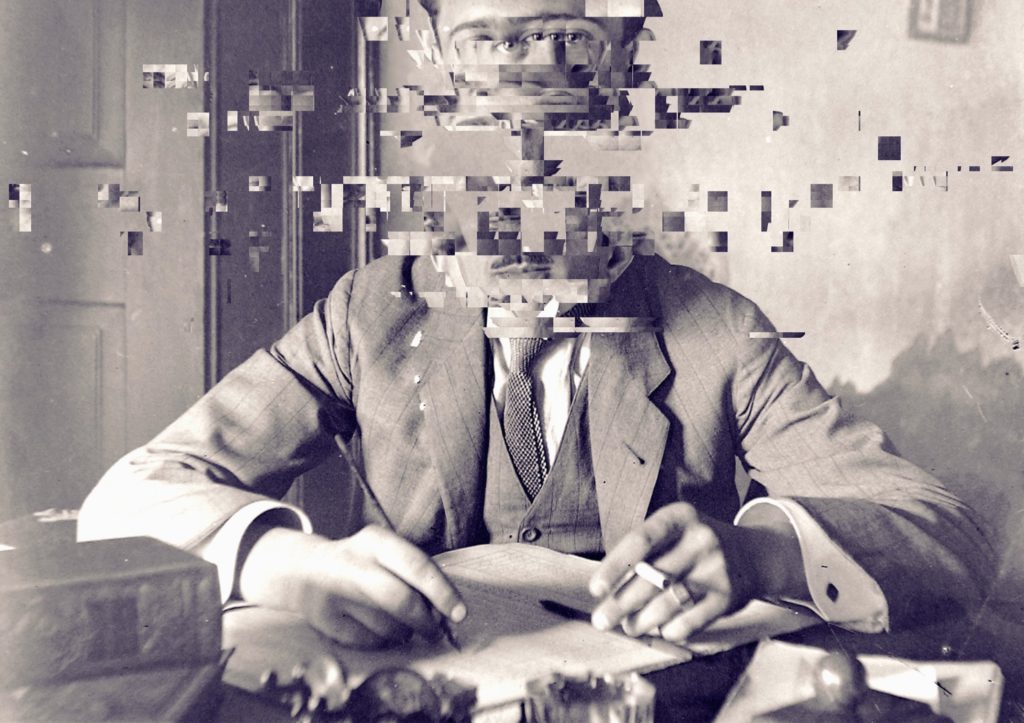
Glitch art can also be simply aesthetic or simply fun. Whatever the purpose, glitch art is a way to create something new and unexpected from digital media.
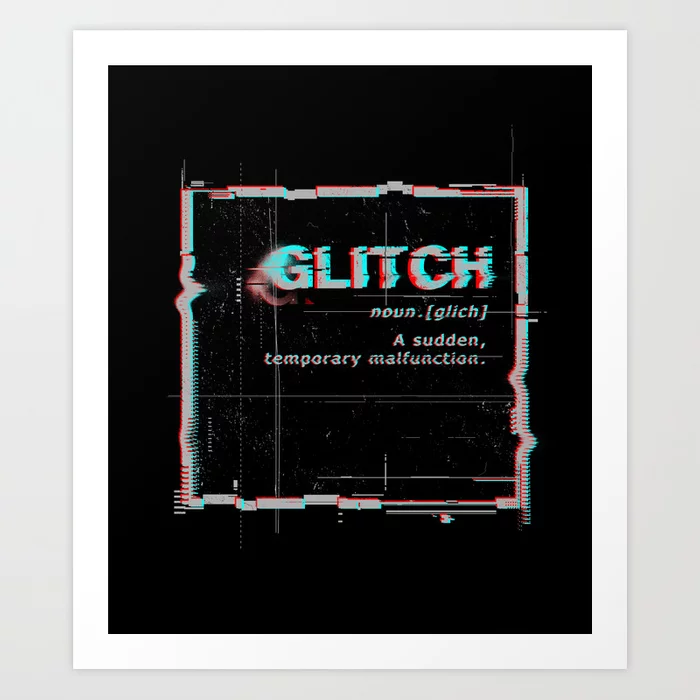
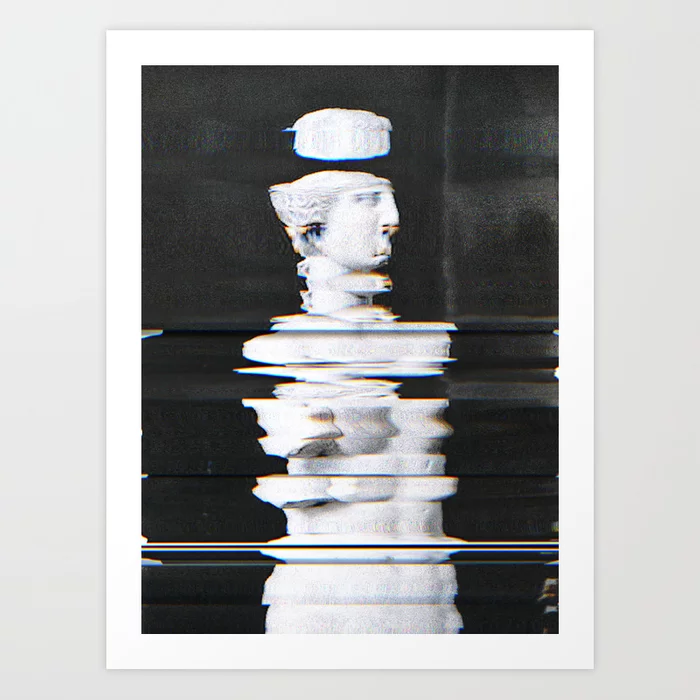
Glitch art has its roots in the early days of computing when programmers deliberately introduced errors or “bugs” into their code to see what would happen. These glitches would often produce unexpected and exciting results, which the programmers share with their colleagues. Glitch art began to take shape in the late 1990s and early 2000s with the advent of digital editing software such as Adobe Photoshop and Apple’s Final Cut Pro. These tools made it possible for anyone with a computer to create glitch art. The genre began to gain popularity in underground art and music scenes.
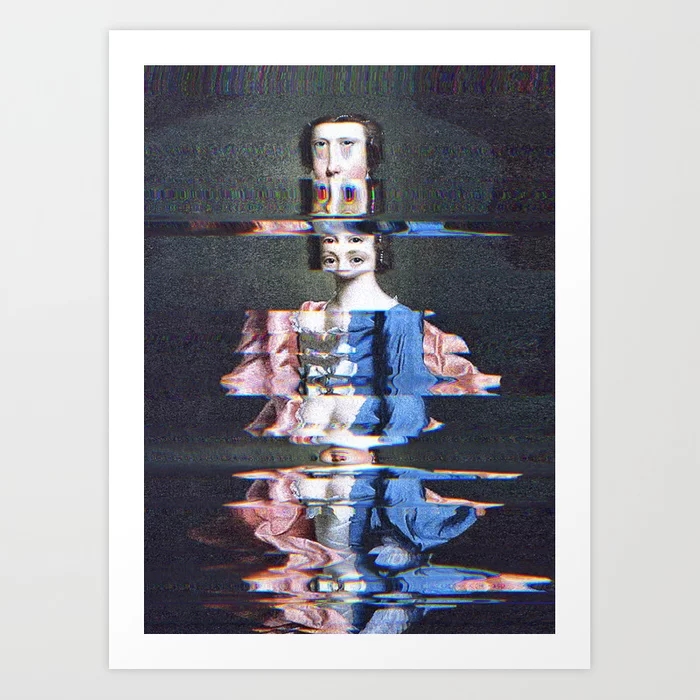
In recent years, glitch art has entered the mainstream. Commercial brands are now using glitch art to create eye-catching and attention-grabbing visuals. The genre is continuing to grow in popularity.
Data Bending example:
Pixel Sorting example:
Famous glitch artists include Sabato Visconti, known for his “datamoshing” technique, which involves manipulating digital video data to create Glitch Art.

Michael Betancourt
Other amazing glitch artists include:
There are many ways to create glitch art, but most methods involve manipulating digital data somehow. For example, you can create glitches by:
Glitch art is all about experimentation, so there are no hard and fast rules.
Here are some videos for creating your own glitch art:
There are a variety of tools that you can use to create glitch art, including:
Glitch art is a fun, creative way to experiment with digital media. Have fun and see what you can create!
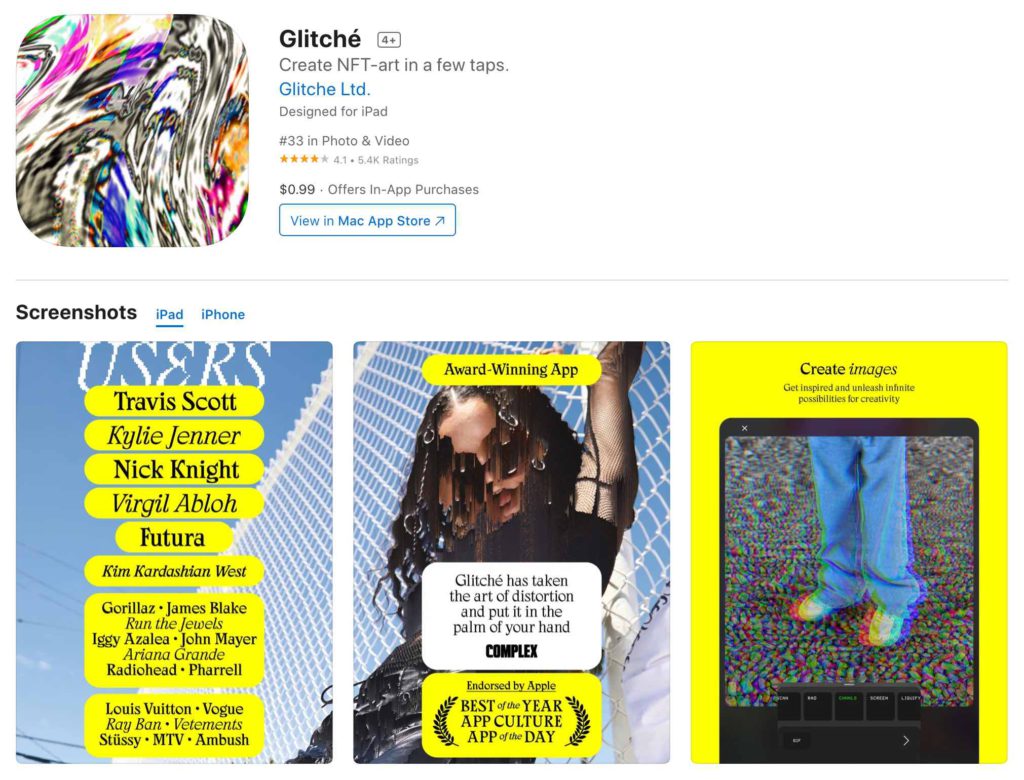
Glitché is an award-winning editor and a perfect NFT-art tool with glitch-filters based on random data that cannot be recreated. Create unique digital art with Glitché.
Glitché is another excellent option for iPhone users. It has a wide selection of glitch effects, and you can even create your own Glitché filters.
Get Glitché.
Glitch Art Studio: Cam Effects (iPhone)
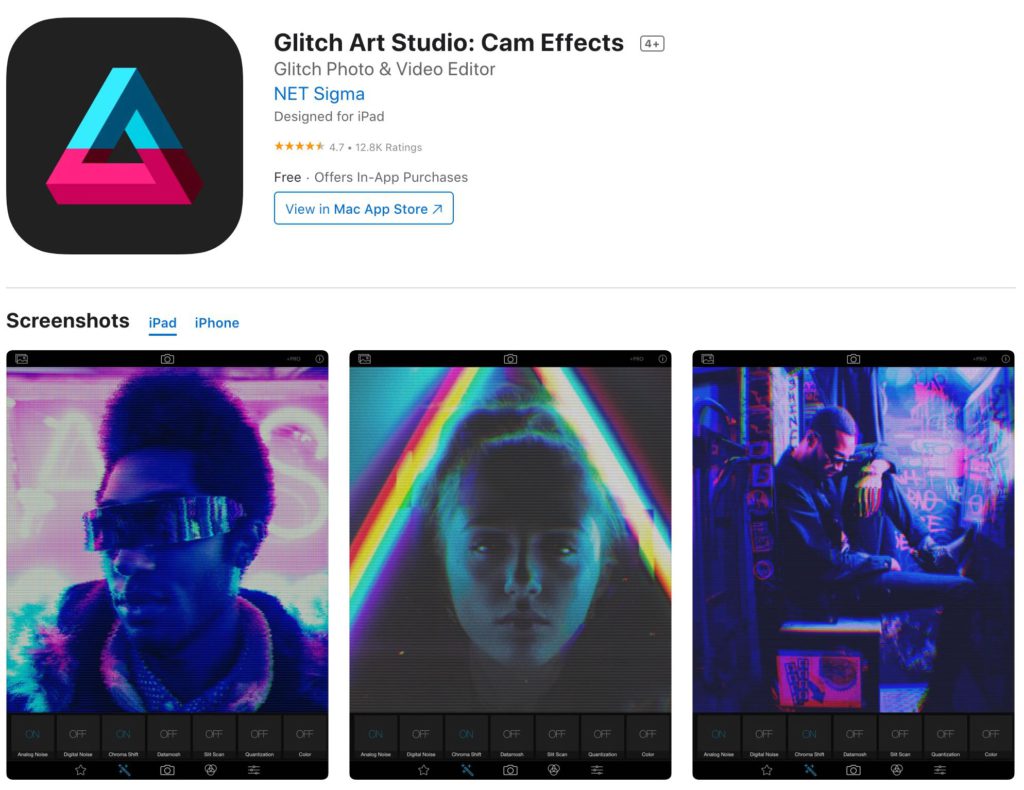
This app is perfect for creating glitch art on the go. It has a simple interface and various glitch effects to choose from.
Add glitches to your photos and videos!
Glitch Art Studio offers an extensive library of exclusive effects to distort your photos and videos in creative ways.
Effects:
MoshUp
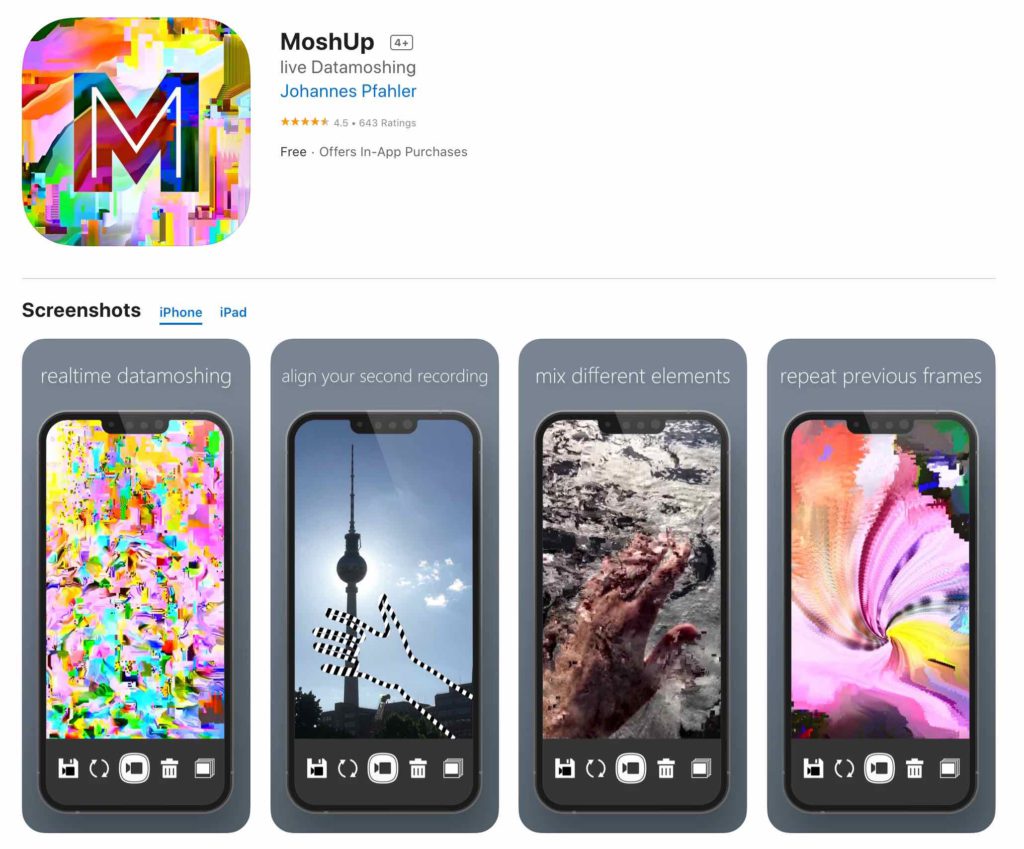
With Moshup you can do live datamoshing on your iPhone or iPad. Capture a short clip and then film something different. The first recording will stick to the second recording and will be transformed by its motion. You can create some interesting mapping effects. The app was mainly used on the viral TikTok datamoshing videos over the last two years.
You can also repeat Frames in order or randomly.
Save the result as an image or video. While data moshing you can now fade back to a clean camera input. It’s now also possible to watch a preview to decide if you want to save or continue with your video recording. Get MoshUp
Web-Based Glitching Tools:
Glitch Art is still a relatively new art form, so there aren’t many Glitch Art Galleries yet. However, here are a few that you might want to check out:
